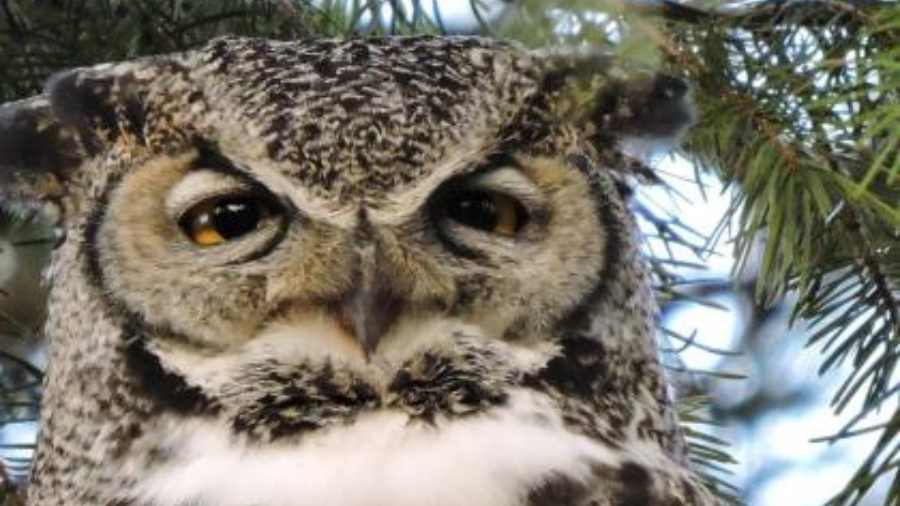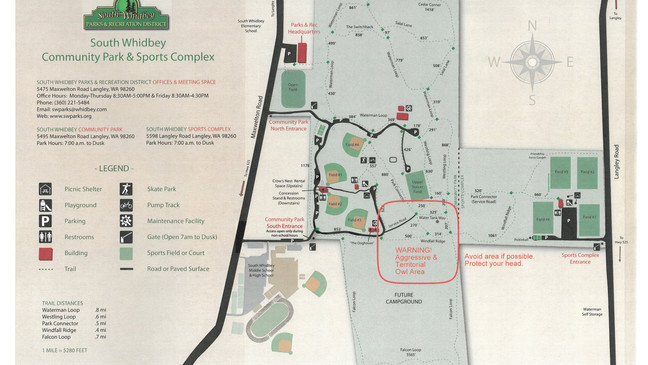Aggressive owl wreaking havoc in local Whidbey park
Mar 29, 2023, 2:10 PM | Updated: 2:37 pm

An owl deemed "aggressive and territorial" has spooked park-goers at both South Whidbey Community Park and Castle Park, causing South Whidbey Parks and Recreation to release an official warning. (Photo courtesy of Washington Department of Fish and Wildlife)
(Photo courtesy of Washington Department of Fish and Wildlife)
An owl deemed “aggressive and territorial” has spooked park-goers at both South Whidbey Community Park and Castle Park, causing South Whidbey Parks and Recreation to release an official warning.
Aggressive behavior from owls is motivated by either defending their territory from intruders or protecting their offspring, according to the Washington Department of Fish and Wildlife (WDFW). This behavior is most common among barred and great horned owls and typically occurs in the springtime when the owls are mating or nesting.
Beloved orca could soon return home after performing for 50 years in Miami
South Whidbey Parks and Recreation believes this owl is a great horned owl and provided a map of its presumed location.
“Please avoid the trails in the areas indicated in red below. We can assume that owls are ranging outside this area, and you should too,” park officials stated in a prepared statement.
Between eight and 10 people have encountered the animal, recreation supervisor Carrie Monforte told The News Tribune, with the encounters including swooping over people, grabbing hats and hair, and causing scratches or bruises.
The great horned owl stands approximately 20 inches tall and has a 48-inch wingspan, according to WDFW. Great horned owls can turn their heads 270 degrees either way when facing forward, but they can’t turn their heads 360 degrees.
Both great horned and barred owls have had multiple local reports of dive bombing residents in defense of their territory or young or searching for food. Owls’ behavior can be even more erratic once it has established their territory — through building a nest — by attacking creatures many times their size.
If you encounter an aggressive owl, WDFW recommends waving your arms slowly overhead to keep the birds at bay. The organization also advises wearing a hat, helmet, or carrying an umbrella.














